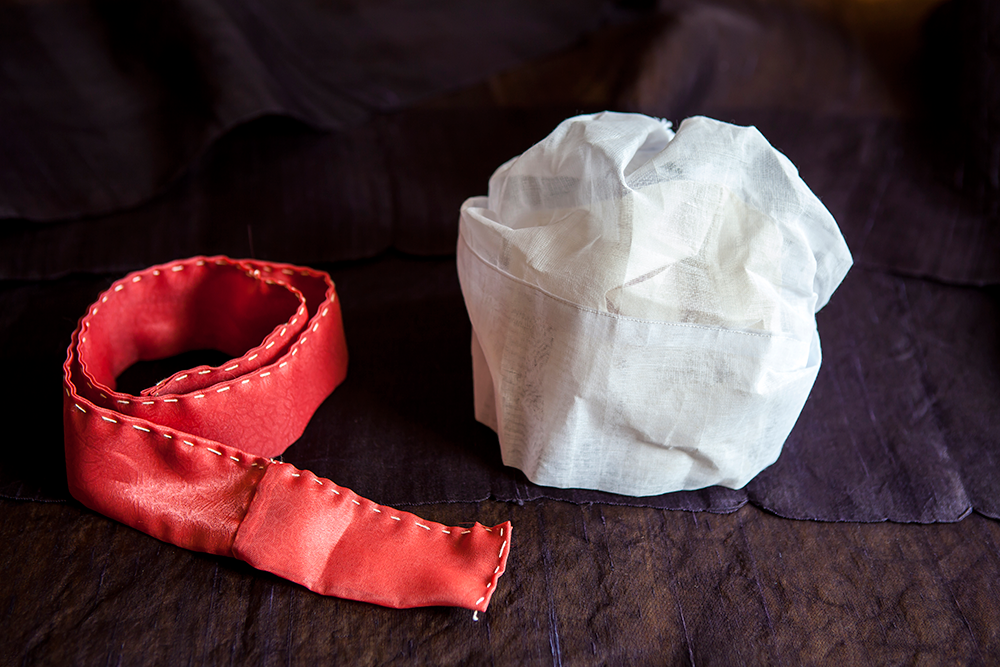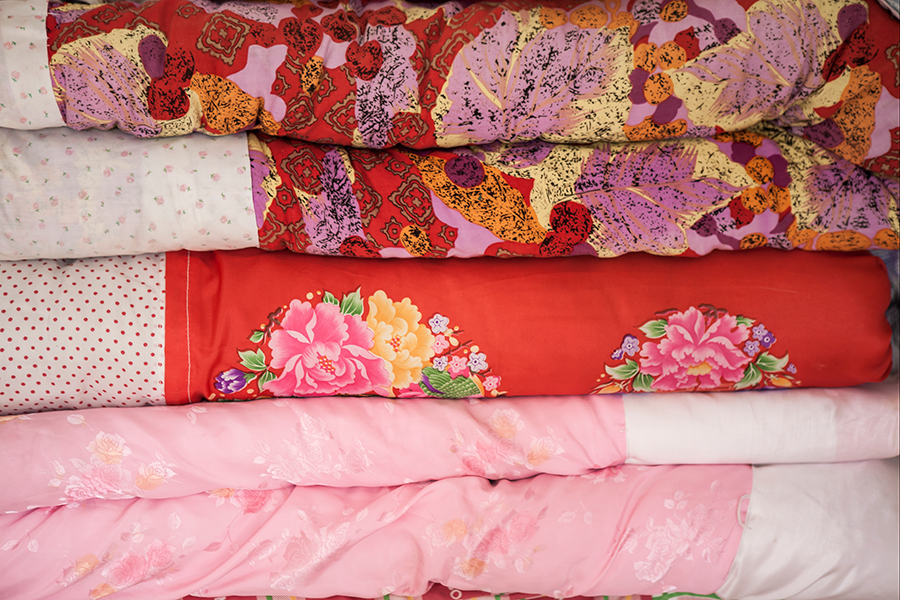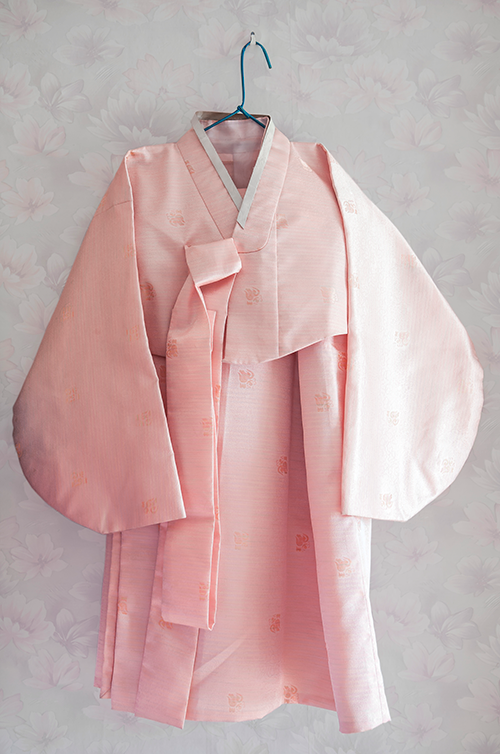
Looking back to the past, all are but victims.
May the dead close their eyes, and the living join hands.
The bandage, as red as an umbilical cord,
wrapped around the lady’s chin throughout life, was so sturdy
that it even connected her with the brutality of the world.
The cotton cloth, as white as a glowing light, was rather dazzling,
though sealing the unspoken bloodshed inside.
Unlike the other entries for Living Memories in this book, this text is not based on an interview,
but is rather Huh Eun-sil’s posthumous interpretation of Jin A-young’s life.

Bedding
The bedding that Jin used.
On the beautiful blankets, however, she tossed and turned before falling asleep.
The rosy pink design is gorgeous. But given the nightmare from its past, it rather causes great sorrow.
Pink Hanbok
Where would Jin want to go in that pretty powdered pink dress?
Apparently, she especially favored pink, as shown in this set of Hanbok.


The late Jin A-yeong, better known as ‘The Cotton Grandmother,’ was born in 1914 and raised in Panpo, a village in Hallim-eup. In January 1949, the counterinsurgency forces attacked her village. She tried to run away, but in the process she lost the lower half of her jaw due to the indiscriminate gunfire of the state-led forces. After her parents passed away, she moved to the village of Wollyeong, a neighboring village where her elder sister had settled. With only half of her jaw, she could not eat properly, suffering from malnutrition, indigestion and arthritis for the rest of her life. She even avoided drinking water in front of others as she didn’t want them to consider her unsightly. Unable to eat or speak well, she wrapped her face with a cotton bandage, surviving a lifetime through solitude, poverty and pain.
Until she passed away in September 2004, she also suffered from fear that a gun-wielding stranger would chase after her. She installed a lock on every door in her house, and locked all doors behind her wherever she went, be it to her bathroom or her front yard. Since that day, she might have locked the door to her mind against the violent world that painfully destroyed not just her jaw but also her life.
The belated official apology from the national government came in 2003, just a year before she left us. Now, her empty house and her cactuses, left without their owner, greet visitors for her daily memorial service.